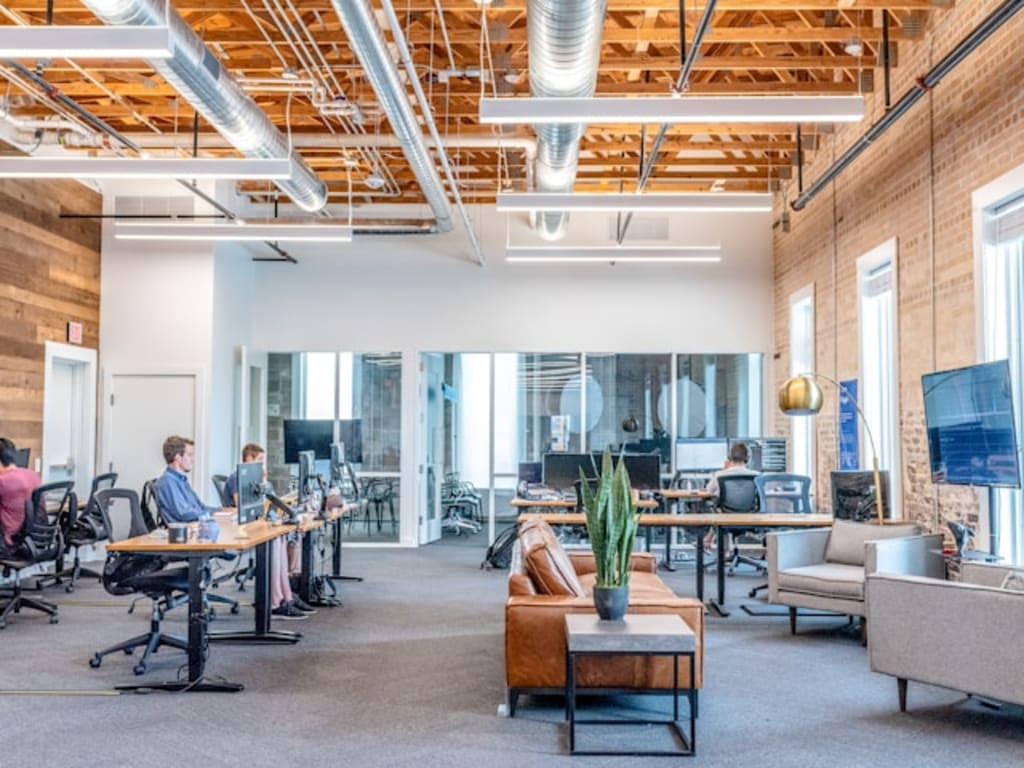Creating Sustainable Work Environments
In this blog, we'll explore the importance of designing eco-friendly workspaces and provide practical tips for businesses looking to make the transition.

In the era of increasing environmental awareness, businesses are under pressure to adopt eco-friendly practices in all aspects of their operations, including office design. Sustainable workspaces not only reduce environmental impact but also enhance employee well-being and productivity. In this blog, we'll explore the importance of designing eco-friendly workspaces and provide practical tips for businesses looking to make the transition.
The Importance of Eco-Friendly Workspaces
Designing eco-friendly workspaces is crucial for several reasons. Firstly, it aligns with corporate social responsibility goals, demonstrating a commitment to sustainability and environmental stewardship. Secondly, green offices can significantly reduce energy consumption, waste generation, and carbon emissions, contributing to global efforts to combat climate change. Additionally, eco-friendly workplaces promote employee health and productivity by improving air quality, natural lighting, and overall comfort.
Energy-Efficient Lighting Solutions
One of the easiest ways to make your workspace more eco-friendly is by investing in energy-efficient lighting solutions. LED lights consume significantly less energy than traditional incandescent bulbs and last much longer, reducing both electricity costs and environmental impact. Incorporating daylighting strategies, such as skylights and light shelves, can further minimize the need for artificial lighting while providing a connection to the outdoors.
Sustainable Materials and Furnishings
When designing an eco-friendly workspace, choosing sustainable materials and furnishings is paramount. Opt for furniture made from recycled or renewable materials, such as bamboo or reclaimed wood. Avoid products containing harmful chemicals like formaldehyde and volatile organic compounds (VOCs), which can off-gas and compromise indoor air quality. Look for third-party certifications such as Forest Stewardship Council (FSC) or Cradle to Cradle to ensure the sustainability and safety of your office furnishings.
Green Building Practices
Implementing green building practices can significantly reduce the environmental footprint of your workspace. Consider incorporating features such as high-performance insulation, efficient HVAC systems, and water-saving fixtures to minimize energy and water consumption. If possible, pursue green building certifications like LEED (Leadership in Energy and Environmental Design) to demonstrate your commitment to sustainability and reap the associated benefits, such as tax incentives and marketing advantages.
Indoor Air Quality Enhancement
Poor indoor air quality can negatively impact employee health and productivity. To create a healthier workspace, prioritize strategies that improve air circulation and filtration, such as installing high-quality air purifiers and using low-VOC paints and finishes. Incorporating biophilic design elements, such as indoor plants and living walls, can also help purify the air and create a more natural and stimulating work environment.
Waste Reduction and Recycling Programs
Reducing waste and implementing recycling programs are essential components of eco-friendly office design. Provide clearly labeled recycling bins throughout the workspace for paper, plastic, glass, and other recyclable materials. Encourage employees to minimize waste by using reusable products like coffee mugs and water bottles, and consider implementing composting programs for organic waste. Partner with local recycling facilities and donate or recycle old electronics and furniture whenever possible.
Sustainable Transportation Options
Promoting sustainable transportation options can further reduce the environmental impact of your workplace. Encourage employees to carpool, bike, or use public transit by providing incentives such as subsidies for transit passes or preferential parking for carpoolers. Install bike racks and shower facilities to accommodate cyclists, and consider implementing telecommuting and flexible work arrangements to reduce the need for daily commuting altogether.
Continuous Improvement and Monitoring
Designing an eco-friendly workspace is an ongoing process that requires continuous improvement and monitoring. Regularly assess your office's environmental performance, solicit feedback from employees, and stay updated on the latest sustainability trends and technologies. Consider forming a green team or sustainability committee to spearhead initiatives, track progress, and engage employees in sustainability efforts. By prioritizing environmental responsibility and innovation, you can create a workspace that benefits both your business and the planet.
In conclusion, designing eco-friendly workspaces is not only beneficial for the environment but also for employee well-being and productivity. By implementing energy-efficient lighting, sustainable materials, green building practices, and waste reduction programs, businesses can reduce their environmental footprint and demonstrate a commitment to sustainability. With careful planning, continuous improvement, and employee engagement, any workspace can become a model of eco-friendly design and inspire positive change in the broader community.
..
..
NOTE: “Would you like to read a blog? If so, please visit The disadvantages of traditional office space include“
About the Creator
Munnazir Zarin
"I'm a blogger covering a variety of topics. If you enjoy my content, please consider supporting me and suggesting new topics for me to explore. Thank you!"






Comments
There are no comments for this story
Be the first to respond and start the conversation.